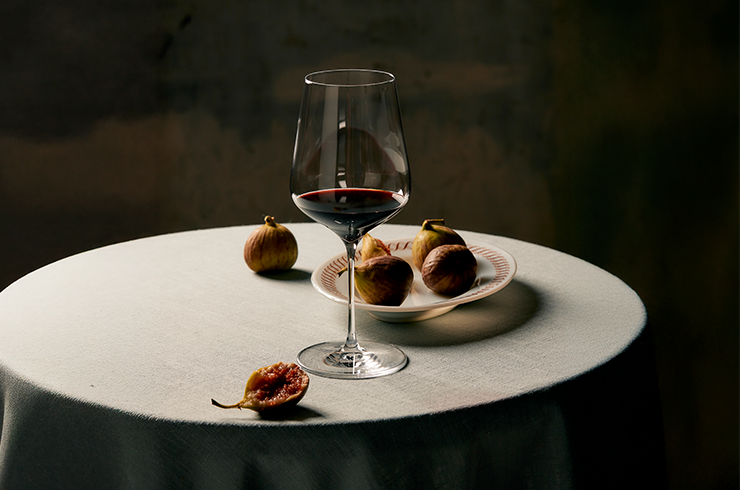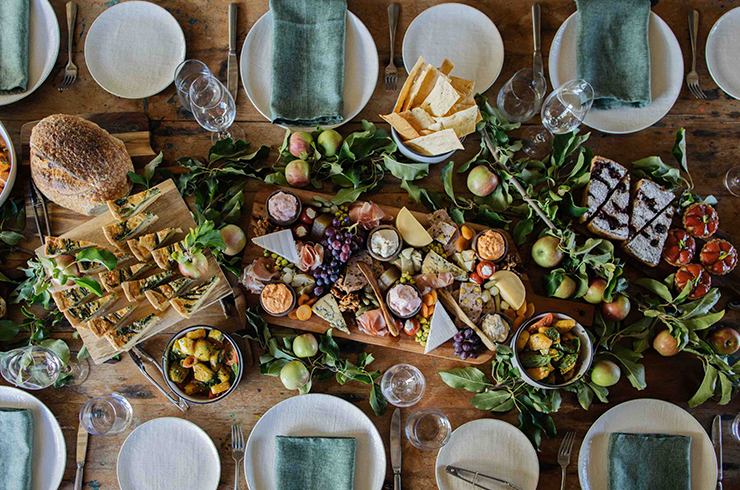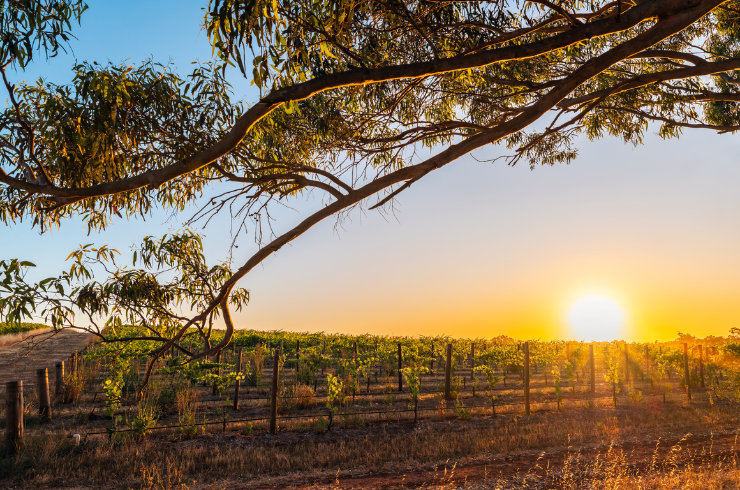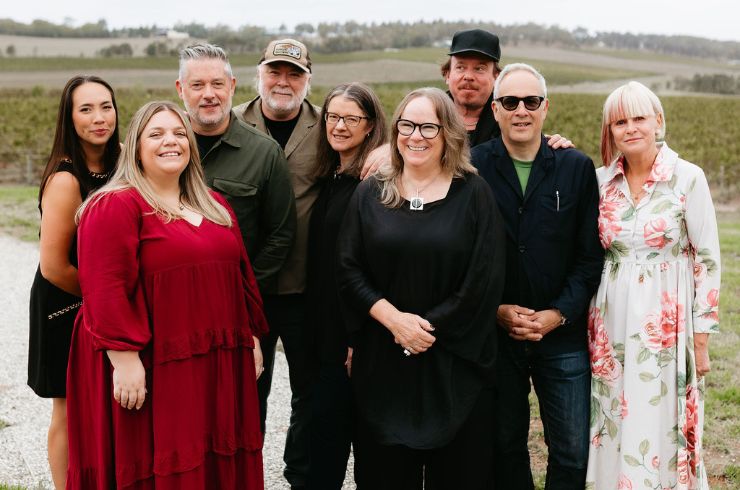Champagne is a region like no other; within its boundaries creating one of the most versatile wine styles on the planet.
Those of us lucky enough to visit Champagne have experienced its famous malleability firsthand. Halcyon days where lunch lasts four hours and a six-course meal is served alongside six different cuvées prove the point the Champenois incessantly preach – there is a Champagne for everything and everyone in this world.
Most of us accept this local wisdom with ease (long lunches in Louis Quinze chateaux help with the convincing, of course) and earnestly pass the message on. But how many of us actually drink Champagne throughout a full meal or evening? To do so involves embracing the full gamut of cuvées, so let’s look at some of the overlooked styles.
Extra Brut Champagne
The driest of the bunch, Extra Brut, is still shaking off its supermodel supping image to some degree, but there’s far more to Extra Brut than fewer calories. Up to six grams per litre dosage is permissible, but seldom do houses go this high, especially with the fashion for drier Brut NVs nudging into the Extra Brut dryness threshold these days, so Extra Brut usually keeps within the three grams per litre or less dosage boundaries.
Its creation involves painstaking work for the cellar master who has to sensitively balance the rawness of no extra sugar with something else that can deliver richness. Options to achieve this include barrel fermentation, malolactic fermentation, longer lees ageing or a larger proportion of reserve wine. Despite all the options available, Extra Brut can be the biggest hit-and-miss of all Champagne’s cuvées, so those who do it well deserve the extra credit. With freshness being Extra Brut’s calling card, it’s most popular as a pre-meal appetite-whetting cuvée, but it can also be useful to serve with raw fish dishes and at earlier times of the day – say, brunch o’clock.
Vintage Champagne
Blinded by the glow of prestige cuvées, vintage Champagne often seems to be a bridesmaid and is consequently very good value on the whole. There have been some stunning vintage releases these past 20 years too, most notably 2002, which was an all-out winner being warm but not too hot, producing creamy, luscious chardonnays as well as plush, ripe pinot noirs. 2008 is another excellent vintage still in decent circulation: a cooler year, which made wines that bristle with energy so they make great drinking now but can also keep a little longer.
For speculative buyers, the mostly warm and dry 2015 season has been touted as the best Champagne vintage since 1947. What’s so great about vintage Champagne – apart from its price – is its extra weight and concentration, which immediately expands its food-pairing options to include richer, heavier foods, whether that involves meat, smoking or richer sauces.

The Champenois incessantly preach – there is a Champagne for everything and everyone in this world.
Demi-Sec Champagne
When it comes to richer pairings, even though most of us are not as sweet on Demi-Sec as other Champagnes, the level of mastery required for good balance is right up there with Extra Brut. Demi-Sec – Champagnes with 32 to 50 grams per litre dosage – are great for blue cheese and pretty good with all kinds of desserts. The natural high acidity of Champagne is always there to guarantee refreshment.
Naysayers who condemn Demi-Sec as a style that masks the character of the wine have actually got it the wrong way around in my mind. The extra sugar of Demi-Sec can boost and enhance the Champagne; lifting aromatics, broadening out the middle palate and rather than suffocating any of the character, it actually brings a different dimension to the wine. Let’s all drink to that!
Twelve Champagnes to try, as recommended by Jane Parkinson
12% alc. $65 (375ml), drink by 2023
A half-bottle with excellent pedigree; famously made with grapes from 60 specific sites and with an impressive 40% of reserve wine, this vibrant golden-coloured Champagne has a pastry-rich aroma with a creamy backbone to the palate. It’s lifted by lively and well-defined bubbles as well as a richness to the palate of baked apples and lightly toasted nuts.
Delamotte Brut NV
12% alc. $175 (1500ml), drink by 2025
This is an elegant and flavourful Brut NV from one of the oldest Champagne houses. What sets this house apart is its high proportion of Grand Cru chardonnay, which, in good years, is shared with the eponymous house Salon. With luscious yellow fruits, long lees ageing and low dosage, the overall effect is complex, layered and refined, making this the most fantastic large format buy.
Ayala Brut Nature
13% alc. $69, drink by 2023
Ayala is one of the true pioneers in crafting a top-notch extra-dry Champagne. This Extra Brut is unusual in that its base wine is the same as that of Ayala’s flagship Brut NV, except this cuvee is aged for an extra year and, of course, has no dosage. Scintillating and zingy with white grapefruit purity, followed by a richer, fleshier apricot mid-palate.
Bollinger Special Cuvée NV
12.5% alc. $76, drink by 2027
One of the best expressions of bold, satisfying and elegant flagship cuvees around, thanks in part to its famously high proportion of pinot noir – 60%. While extremely refreshing throughout, its trademark richness manifests itself as a combination of hazelnuts, orange rind and buttery brioche.
Georges Laval Garennes Extra Brut NV
11.5% alc. $142, drink by 2025
Organic pinot meunier-dominant grower Champagne with 1/gl dosage. This is ticking the alternative boxes for those who want to branch out into something different but still want a guaranteed delicious bottle. With just 10% chardonnay and pinot noir in the blend, this has been fermented in oak to give extra generosity to the red berries and pastry complexity.
Pierre Gimmonet Cuvée Cuis Blanc de Blancs NV
12.5% alc. $89, drink by 2028
This house only deals with chardonnay so this is understandably an exemplary Blanc de Blancs. Using fruit from Champagne’s premier cru village Cuis, a village famous for wines that are elegant, it has a beautiful salty minerality and crisp citrus freshness. In other words, it perfectly embodies the charm of this pure chardonnay style.
AR Lenoble Blanc de Blancs 2008
12.5% alc. $144, drink by 2030
Invitingly golden and effervescent with 10% of the base wine aged in oak and a low dosage of 4g/l. The charming aromas of buttered toast and roasted grapefruit are supported in the palate together with well-defined bubbles, zingy freshness and a blanched almond richness fleshed out with baked apples and lemon rind. A wonderful value example of this hallowed vintage.
Piper Heidsieck Rare 2002
12.5% alc. $269, drink by 2030
A Prestige Cuvee from the most celebrated of Champagne vintages, Rare is Piper’s tribute to the heatwave of 1976, which spawned “extraordinary cuvées”. Bold and punchy on the nose, it has exotic notes of mango and pineapple tempered by a brioche richness and event a touch of spicy ginger. The complex and layered palate has toasted almonds, dried fruits and a very long finish, with a Darjeeling spice to end. Mesmerising.
Alfred Gratien Brut NV
12.5% alc. $80, drink by 2025
A very well-respected grower Champagne from Epernay (who was one of the few houses, along with Bollinger and Krug, to continue to ferment the base wine in barrel when stainless steel became de rigeur). With real depth and lift, it has citrus blossom, buttered sourdough and a fantastic chalky minerality throughout with charming, well-defined bubbles.
Larmandier Bernier Rosé de Saignée NV
12.5% alc. $168, drink by 2030
A well-respected grower house with sophistication and elegance throughout its entire portfolio, this deeply-coloured organic and biodynamic rosé included. Made with pinot noir from Vertus, its bold colour is thanks to a two-day maceration on skins, which also contributes to its attractive pomegranate, rosehip and slightly sour cranberry flavours.
Ruinart Rosé NV
12.5% alc. $110, drink by 2025
The first-ever pink Champagne, Ruinart’s generous proportion (nearly half) of chardonnay gives this blended rosé a subtle and refreshing character with a vibrant nose of pink grapefruit and red cherries. Bold in raspberry and cherry flavours on the palate with a lively lift of fresh herbs on the finish.
Billecart-Salmon Demi Sec NV
12% alc. $90, drink by 2023
A subtle and delicious sweeter Champagne that is essentially the house’s Brut Reserve cuvee with a higher dosage. It has subtle yet persistent magnolia and primrose aromas, with a hint of honey and brioche before finishing with a richer shortbread buttery flavour. Deliciously decadent and well balanced.
To see James Halliday's top Champagnes from the Top 100, see here.
Latest Articles
-
Win
Win a stunning collection of Plumm glassware and wine, valued at over $500
1 day ago -
Wine Lists
Top Christmas wines under $30 (and five worth splurging on)
1 day ago -
Wine Lists
Why you should drink Australian this festive season (and 80 of our best wines to try)
1 day ago -
From the tasting team
The Aussie wines the Halliday Tasting Team will be opening this festive season
1 day ago




